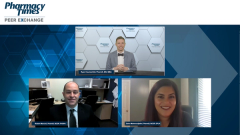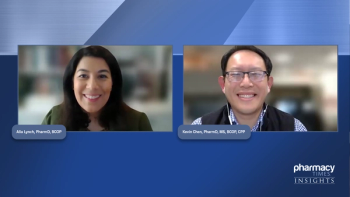
Role of Oral Agents in MDS Treatment Strategy
Dr Mahmoudjafari shares considerations for incorporating oral agents into MDS treatment landscape.
Episodes in this series

Ryan Haumschild, PharmD, MS, MBA: I foreshadowed this a little. I want to come back to it because I know our viewers are sitting at the edge of their seats. It has to do with oral agents in this space. We’ve talked a lot about traditional IV [intravenous] agents that we utilize and how patients are used to getting transfusions. They’re used to getting IV agents, but we’re starting to see the emergence of orals. That’s important for a number of reasons. No. 1, patients can take therapies in the comforts of their home. We talked about transportation vulnerability and getting labs and transfusions and how they’re always having to move. If they can take something at home, that’s so important.
To counteract that a little, we also talked about how safety is paramount even if they’re taking it at home. It’s just as important to monitor as [it is] if they’re getting an IV therapy. As we think about oral agents within this space, I’m going to turn to Dr Mahmoudjafari to speak about the opportunities for oral agents. When we consider that, what are some of the challenges to adherence for orals and IVs. Each of them has some unique considerations that we need to be aware of.
Zahra Mahmoudjafari, PharmD, BCOP, DPLA: Absolutely. In terms of opportunity, within the last several years, we can’t get away without talking about how resource intensive our needs have been and how limited our resources are. Our patients come into the clinic and need to be seen, [and we also have] the needs of the pandemic. Opportunities exist for decreasing some of the resource burden and having our patients spend time in the infusion chair. This is a great space for oral agents and where the field is going in general, but it comes with its own challenges. We’re dealing with patients with MDS [myelodysplastic syndrome] who are older and who have transportation issues, so oral issues or oral therapies are a great option, but they also come with their own significant challenges. For instance, delays in getting the patients started on therapy. Sometimes we run into delays with getting insurance coverage or co-pay assistance. That adds time for when a patient can be started on therapy, and that may delay their start. That’s frequently 1 of the major concerns. Therefore, some providers choose IV therapy.
Another challenge is dose modification. If we start the patient on a certain dose and decide to cut down because of toxicities or some count parameters, sometimes that means another prescription in and of itself and another prior authorization to confirm that dose. Fortunately, with some of the oral therapies that we have for the treatment of MDS, that’s easy. Though with some of our other oral medications, that can be a challenge.
You can’t talk about oral agents without talking about some semblance of compliance. It has to be taken daily for the entire month. This is different from the IV version, which is 5 or 7 days a month, every 20 days. It’s a discussion with the patients about what they’re able to tolerate vs not tolerate and the understanding of their other comorbidities. There are opportunities but also some challenges when it comes to our oral agents.
Ryan Haumschild, PharmD, MS, MBA: You did a great job because you talked about the pharmacy and medical benefits. Some patients may want to take it at home, but you have to make sure they’re adherent. How do we evaluate the proportion of days covered? At the end of the day, it’s great to have these new agents, but there are unique considerations to be aware of. This is especially true with some of the payer mandates. If internal oncology dispensing pharmacies or integrated dispensing pharmacies aren’t able to fill for this patient, how do they provide good oversight? If they come on-site and get that infusion, then they know the patient is receiving the medication and they have that opportunity to counsel. There are many great discussion points there. I appreciate you hitting on the high level. Ultimately, we need to figure out what’s best for our patients. We do that through shared decision-making and understanding some of their unique factors when we’re considering which treatment to select.
Transcript edited for clarity.
Newsletter
Stay informed on drug updates, treatment guidelines, and pharmacy practice trends—subscribe to Pharmacy Times for weekly clinical insights.



